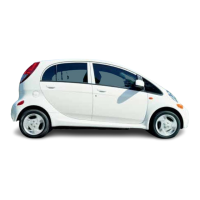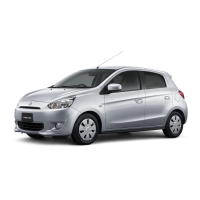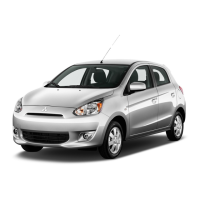Troubleshooting
D-25
35 Clutch slips (engine speed increases with no increase in
vehicle speed)
1 Worn or oil soaked clutch plate.
2 Clutch plate not broken in. It maytake 30 or40 normal starts for a new
clutch to seat.
3 Diaphragm spring weak or damaged. Remove clutch cover/pressure
plate assembly and inspect.
4 Flywheel warped (Chapter 2).
5 Debris in master cylinder preventing the piston from returning to its
normal position.
6 Clutch hydraulic line damaged.
7 Binding in the release mechanism.
36 Grabbing (chattering) as clutch is engaged
1 Oil on clutch elate. Remove and inspect. Reoair anv leaks.
2 Worn or loose engine or transmission mounts:They may moveslight-
ly when clutch is released. Inspect mounts and bolts.
3 Worn splines on transmission input shaft. Remove clutch compo-
nents and inspect.
4 Warped pressure plate or flywheel. Remove clutch components and
inspect.
5 Diaphragm,spring fatigued. Remove clutch cover/pressure plate as-
sembly and inspect.
6 Clutch linings hardened or warped.
7 Clutch lining rivets loose.
37 Squeal or rumble with clutch engaged (pedal released)
1 Improper pedal adjustment. Adjust pedal freeplay (Chapter 1).
2 Release bearing binding on transmission shaft. Remove clutch com-
ponents and check bearing. Remove any burrs or nicks, clean and relubri-
cate before reinstallation.
3 Pilot bushing worn or damaged.
4 Clutch rivets loose.
5 Clutch plate cracked.
6 Fatigued clutch plate torsion springs. Replace clutch plate.
38 Squeal or rumble with clutch disengaged (pedal depressed)
1 Worn or damaged release bearing.
2 Worn or broken pressure plate diaphragm fingers.
39, Clutch pedal stays on floor when disengaged
Binding linkage or release bearing. Inspect linkage or remove clutch
components as necessary.
Manual transmission
Note: Al/manual transmission service information is locatedin Chapter 7,
unless otherwise noted.
40 Noisy in Neutral with engine running
2 , Damaged main drive gear bearing.
3 Insufficient transmission oil (Chapter 1).
4 Transmission oil in poor condition. Drain and fill with proper grade oil.
Check old oil for water and debris (Chapter 1).
5 Noise can be caused by variations in engine torque. Change the idle
speed and see if noise disappears.
41 Noisy in all gears
1 Any of the above causes, and/or:
2 Worn or damaged output gear bearings or shaft.
42 Noisy in one particular gear
1 Worn, damaged or chipped gear teeth.
2 Worn or damaged synchronizer.
43 Slips out of gear
1
2
3
4
5
6
7
8
9
10
11
Transmission loose on clutch housing.
Stiff shift lever seal.
Shift linkage’binding.
Broken or loose input gear bearing retainer.
Dirt between clutch lever and engine housing.
Worn linkage.
Damaged or worn check balls, fork rod ball grooves or check springs.
Worn mainshaft or countershaft bearings.
Loose engine mounts (Chapter 2).
Excessive gear end play.
Worn synchronizers.
44 Oil leaks
1 Excessive amount of lubricant in transmission (see Chapter 1 for cor-
rect checking procedures). Drain lubricant as required.
2 Rear oil seal or speedometer oil seal damaged.
3 To pinpoint a leak, first remove all built-up dirt and grime from the
transmission. Degreasing agents and/orsteam cleaning will achieve this.
With the undersideclean,drive thevehicleatlowspeedsso theairflowwill
not blow the leak far from its source. Raise the vehicle and determine
where the leak is located.
45 Difficulty engaging gears
1 Clutch not releasing completely.
2 Loose or damaged shift linkage. Make a thorough inspection, replac-
ing parts as necessary.
3 Insufficient transmission oil (Chapter i).
4 Transmission oil in poor condition. Drain and fill with propergrade oil.
Check oil for water and debris (Chapter 1).
5 Worn or damaged striking rod.
6 Sticking or jamming gears.
46 Noise occurs while shifting gears---
1 Check for proper operation of the clutch (Chapter 8).
2 Faulty synchronizer assemblies. 1 Input shaft bearing worn.

